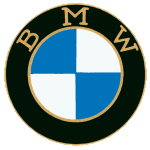

Martin Stolle, born on March 3, 1886, Berlin, was a designer and creator of motorcycle and automobile engines.
Initially he worked with the motorcycle manufacturer Cudell in Aachen. In 1917 he joined Rapp Motorenwerke GmbH, a manufacturer of aviation engines, which, after partnering with Max Fritz (Daimler) and Gustav Otto (Flottweg), formed BMW and developed the M2B15 "Bayern Motor", a 492cc longitudinal flat-twin inspired by the Douglas which Stolle owned and rode.
The new engine was fitted to Bison, Corona of Brandenburg, Helios, Heller, SMW and Victoria motorcycles, and was also used as an industrial engine.
When BMW began producing its own engines in 1923, they employed Stolle (who was working at Victoria), developing new OHV transverse flat-twins of 500cc and 600cc.
In 1925, Stolle established an automobile factory, Vorster and Stolle Motoren AG, which built sports machines with engines of 1500cc. Later in the 1920s Stolle moved to the Deutsche Industrie Werke of Berlin-Spandau, which built small cars and D-Rad motorcycles.
There he worked on improving the front suspension and also developed, in 1929, the D-Rad R10 496 cc OHV and the sidevalve R11.
When D-RAD folded in 1933 Stolle began work on an air-cooled four-cylinder boxer engine for NAG (National Automobil-Gesellschaft) which may have influenced the Porsche design used in the Volksagen - but see also Josef Ganz.
During this period Stolle also worked on the Victoria KR8 500cc sidevalve twin, and then on the similar (but considerably improved) KR9.
In 1939, Martin Stolle designed a lightweight motorcycle known as Sursum equipped with a Sachs 98cc two-stroke, manufactured by Gustloff (BSW Gustloff) in Suhl.
The firm produced armour for the Wehrmact during World War II, and subsequently he became a respected name in the automotive industry.
Martin Stolle died on September 25, 1982, at 96 years of age.
Sources: OTTW, wikipedia.de, et al.